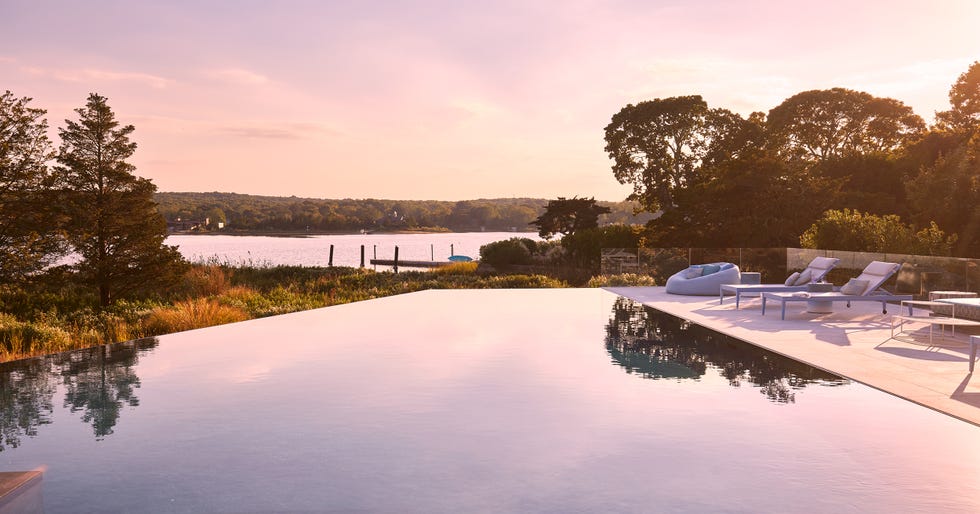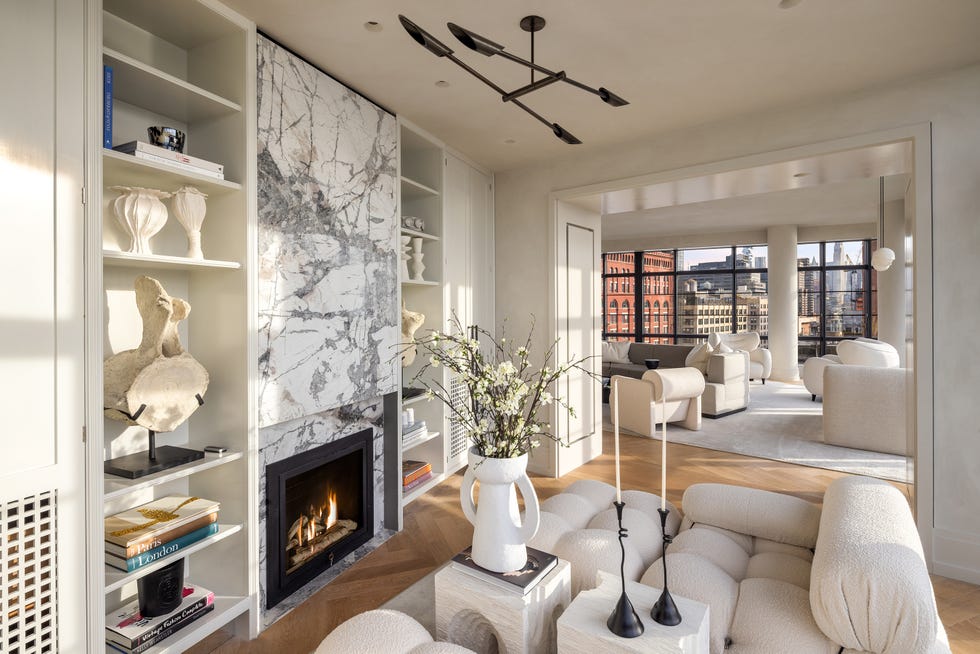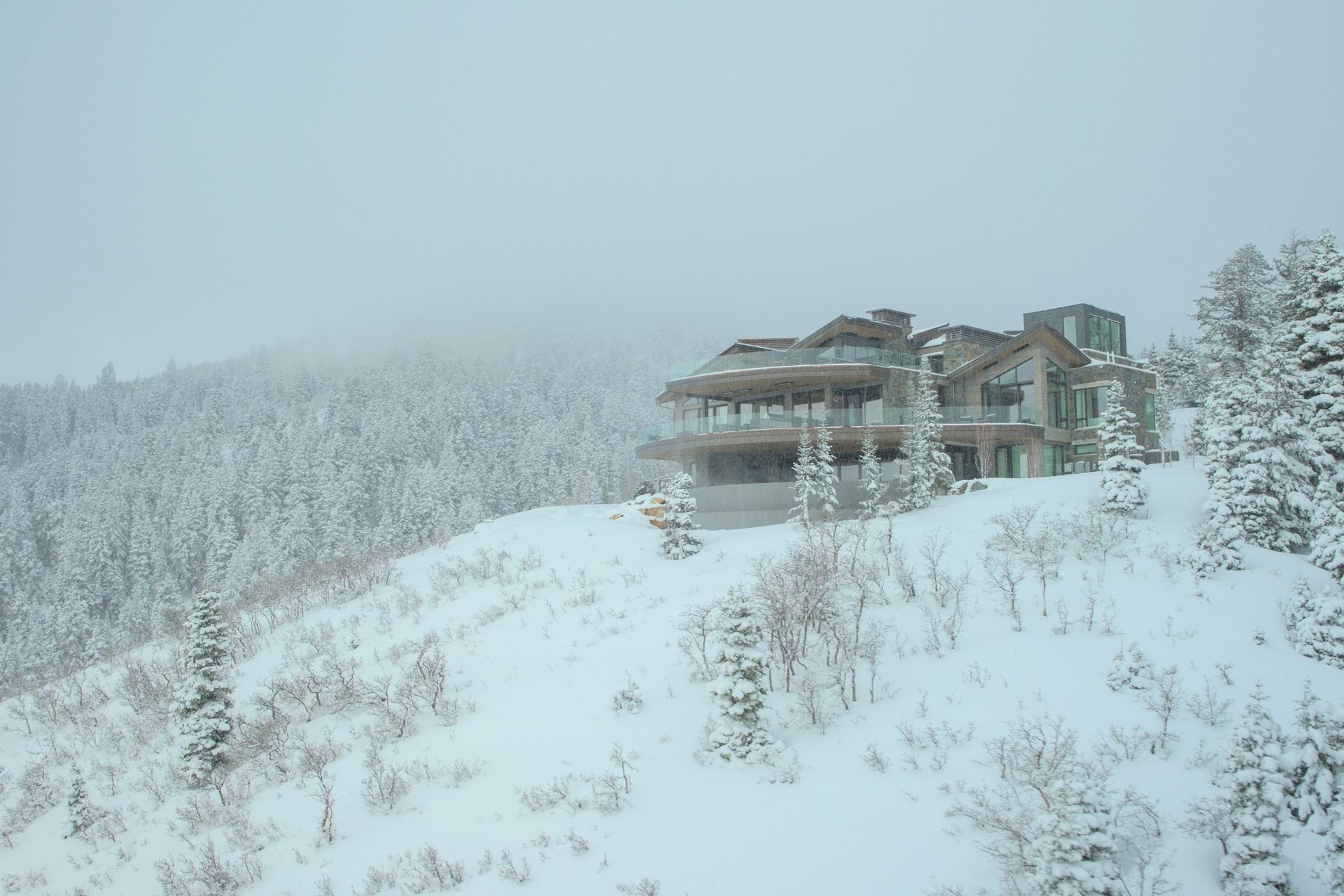Art Deco isn’t suddenly back, but it does seem to be everywhere, all at once. Why? Some say it’s a response to minimalism burnout (is Art Deco the anti-quiet luxury?), others see the trend as in keeping with fashion’s typical cycle of rediscovering itself every few years. Whatever the reason, it’s on TikTok’s For You Pages, which means if it’s not already in your living room, it might be soon.
Below is a bite-sized history, a few important references, and some Art Deco elements to try working into your spaces.
What makes it Art Deco?
In its contemporary manifestations, Art Deco is defined by symmetrical patterns in contrasting colors, geometric shapes and sharp lines. Almost always a shiny chrome or metal works to underscore the palette, which while bold tends to be muted; black outlines give shape to browns, reds, mosses and umbers. Think intersecting chevrons, arched peacock-like fans, sunbursts and stylized figures. Gold almost always has a strong presence.
When asked to describe Art Deco, many reach for words like glamorous, extravagant, and bold. Ask historians and they’ll tell you there is no singular definition. When John Malkovich described the Chrysler Building, one of the world’s most famous examples of Art Deco architecture, in a 10-minute short documentary for the BBC in 1994, he used the word eccentric: “It’s so crazy and vigorous in its execution, so breathtaking in its vision, so brilliantly eccentric.”
To really understand what makes Art Decor extravagant, muted and eccentric while remaining also somehow beyond definition, a brief dip into history is in order.
What time period is Art Deco?
While Art Deco traveled far and wide, its initial heyday was relatively short-lived. The name Art Deco came from a 1925 fair in France called the Exposition international des arts décoratifs et industriels modernes, shortened to Art Deco or just Deco. Most describe the endpoints of its spectrum as 1919 and 1939, between World Wars.
Where does Art Deco come from?
Art Deco was rooted in art movements that emerged in turn-of-the-century Europe—Dada, futurism, cubism—and schools of design and architecture—From Art Nouveau to Bauhaus; Le Corbusier is an influence, so is Ludwig Mies van der Rohe and Hilyard Robinson.
As in the paintings and decorative arts that eventually helped define it, Deco architecture belays the era’s pursuit of a machine-age modernity (note this was also the Roaring ’20s and the Jazz Age; Prohibition played its part). According to Britannica, «the characteristic features of the style reflected admiration for the modernity of the machine and for the inherent design qualities of machine-made objects.»
It was, if not an outright rejection of the fussy, baroque styles popular in the past, then pretty close to it: Deco was an aesthetic that mirrored the cars and airplanes and radios and sleek machines and factories revolutionizing peoples’ lives. In effect, it could be read as an optimistic embrace of the future, and not in the abstract, as with American futurism in the 1950s and ’60s, when the threat of nuclear war added a fearful edge to the art and design that helped cement a cultural obsession with flying cars and Jetsons-esque automation. Art Deco was aligned with a future that had already arrived. “No old stuff for me!” the architect and designer of the Chrysler Building William Van Alen famously said. “No bestial copyings of arches and columns and cornices! Me, I’m new! Avanti!»
Then came the depression, which effectively put a stop to skyscraper mania and the opulent detailing that made Art Deco what it is. The Chrysler Building opened in May 1930, roughly seven months after the crash of 1929, a famous Thursday in late October. And as we know, when a recession hits, exuberant architectural details that add flair—and cost—for the sake of it are the first to go.
What Art Deco inspiration can you look to?
And now, it’s back. Art Deco today doesn’t carry the same fresh excitement it once did, but it’s not a nostalgia play, either. Deco creates an opulent but comfortable gestalt; it’s livable, warm and undeniably bohemian. To invest, however, is a commitment, not only in materials but in learning how to make them play.
So before you start experimenting, it will be useful to have some references in mind. Start by looking to the paintings of Tamara de Lempicka, whose heavily outlined figures shown in luxe, shining fabrics rendered in bright colors create a tonally moody feast.
Similarly, paintings and works by Aaron Douglass, Sonia Delaunay, and René Lalique are important references; as are the costumes in the 1929 film Ben-Hur, by Erté, and the iconic performances of Josephine Baker.
Note the Deco inflection behind the works of artist, craftsman and typeface designer, Eric Gill (who is, yes, behind typefaces such as Gill Sans). Look to the lines of certain Cartier watches, the Art Deco district in Miami, the Théâtre des Champs-Élysées, in Paris, and dig into the history behind so many more buildings that Arricca Elin Sansone wrote about for ELLE DECOR last year.
Five Art Deco tricks to try in your own home
Start with the floors
When clients came to New York decorator Bradley Stephens with a request for Deco, he looked to the «grand public buildings of the period, like banks and libraries,» to build a mood board that featured «terrazzo floors, tray ceilings, and metal inlays,» wrote Charles Curkin for ELLE DECOR in 2021. With the austere but splashy—and very bank-like—floors in place, he added softer elements and curved lines to draw on two central tenets of the movement: strong geometric patterns paired with well-placed, curvilinear accents.
Bring in art, and eye-catching details
To maintain the integrity of a historic Art Deco apartment, Dorothy Berwin and her architectural designer Sandra Arndt of Studio AKTE had to be careful stewards of a space that came with original «casement windows, tongue-and-groove wood floors secured by timber dowels, an enormous marble fireplace, and two monumental round mirrors facing one another in the living room,» Judi Roaman wrote for ELLE DECOR in 2021. In an apartment like this one, understated details, vintage pieces, and prominent art finished the sentence that the bones of this Deco structure began.
Go for chrome, steel, and mirrors
Often when people think of Art Deco they picture the impact of chrome, gold, and mirrored surfaces. And they’re not wrong. Look to the lobby of the Chrysler Building for the drama and eccentricity so often highlighted as definitional to Art Deco—it’s marble on metal plus interlocking patterns. This is one element that clearly reflects the original Deco’s embrace of the machine age. The Chrysler Building is, let’s not forget, an ode to the Chrysler car empire, and those nesting crowns on the facade represent hubcaps. But images set to a Deco background also often depict a different kind of drama, one produced by the chiaroscuro of details thrown in relief by stark lighting. In other words: Creating drama can be produced by light bouncing of shiny surfaces.
Add texture with inlays
The drama of Deco also plays out in details like molding, inlays and floor or wall patterns. And often, all of it at once. New York designer Steven Gambrel together with Chicago architect Phillip Liederbach wanted interiors in this 1929 Art Deco home in Chicago that embodied “Chicago-ness: what it really means to be in Chicago,» Gambrel told ELLE DECOR in 2017. «We were trying to cull from the past while establishing a unique vocabulary.” The unique vocabulary, as seen here, draws on Deco with the use of inlays that catch and reflect a rich, two-tone red against steel grey, allowing shadows to create lines that deepen the tonal intrigue of the space.
Lean into patterns
To create this look in one of Madrid’s lauded Art Deco apartment buildings, ELLE DECOR A-List designer Lorenzo Castillo leaned on patterned textiles and floors in muted colors that enhanced the pops of color brought by art and furniture. In the bathroom, boxy shapes created by frames around the mirrors—the shape of the sink and shower barrier—draw on and enhance the Deco vocabulary.
Go for drama with pops of color
Against a muted palette and sharp lines made in black, grey or brown, a spot of surprising color can invoke the voice of Deco. Try accents in bright red, Kelly green, shiny gold or a deep purple. For Berwin’s historic apartment, custom banquettes and a Milo Baughman chair added just the right amount of pizzaz to the grey and chrome.












